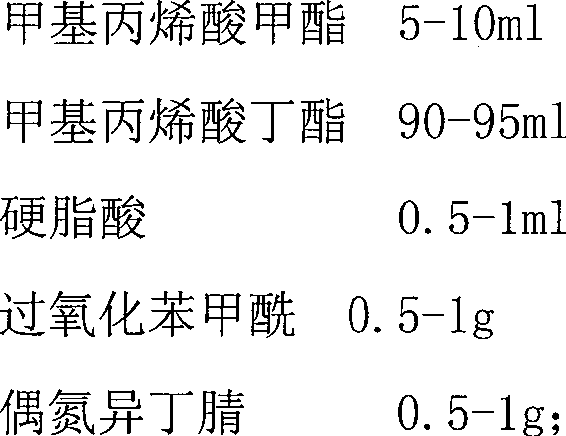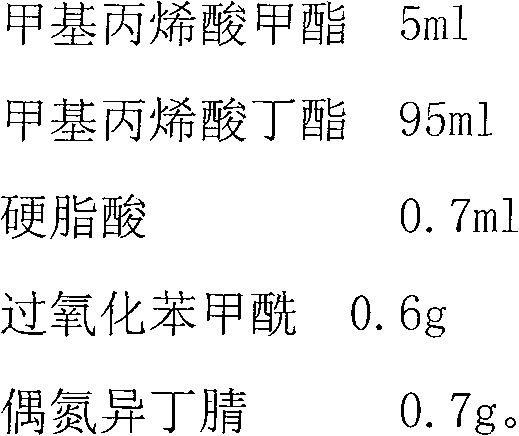Manufacturing method of daphnia microslide specimen
A technology for microscopic slides and production methods, which is applied in the preservation, application, animal husbandry and other directions of human or animal bodies, can solve the problems of long drying time of glycerol glue, difficult to distinguish the fine structure, and unclear observation, etc., and achieves the internal structure. Clear, shortened drying time, improved clarity
- Summary
- Abstract
- Description
- Claims
- Application Information
AI Technical Summary
Problems solved by technology
Method used
Image
Examples
Embodiment 1
[0019] Fixation: live daphnia were anesthetized and fixed in 70% ethanol aqueous solution.
[0020] Single dyeing: Dyeing with borax magenta for 1 day.
[0021] Color separation: Hydrochloric acid-alcohol color separation, that is, add 1-2 drops of hydrochloric acid to 70% ethanol until no dye falls.
[0022] Ethanol dehydration step by step: 85% ethanol→95% ethanol→absolute ethanol dehydration (absolute ethanol 3 times) (15 minutes for each gradient).
[0023] Replacement: The ethanol in the dehydrated water flea body was replaced by 35% acetone → 50% acetone → 75% acetone → 85% acetone → 95% acetone → anhydrous acetone (anhydrous acetone 3 times) (15 minutes for each gradient).
[0024] Sealing: suck out the daphnia in acetone with a straw and put it directly on a clean glass slide. After a little evaporation, add 1 or 2 drops of pre-polymerized methacrylate, and carefully cover the cover glass to avoid air bubbles. After sealing the slides, place them in an oven at 60°C f...
Embodiment 2
[0028] Fixation: Live daphnia were placed in Bouin's fixative for 1 hour.
[0029] Dyeing: first carry out chromium alum-cyanine staining, dyeing for 3 hours.
[0030] Color separation: hydrochloric acid - alcohol color separation.
[0031] Gradual ethanol dehydration: 35% ethanol → 45% ethanol → 55% ethanol → 75% ethanol → 85% ethanol → 95% ethanol → absolute ethanol → absolute ethanol → absolute ethanol dehydration, each gradient is 20 minutes.
[0032] Counterstaining: When dehydrating to 95% ethanol, prepare saturated orange G ethanol solution and dip for 1 hour.
[0033] Replacement: The ethanol in the dehydrated water flea body is replaced by 35% acetone → 50% acetone → 75% acetone → 85% acetone → 95% acetone → anhydrous acetone → anhydrous acetone → anhydrous acetone, each gradient is 15 minutes.
[0034] Sealing: suck out the daphnia in acetone with a straw and put it directly on a clean glass slide. After a little evaporation, add 1 or 2 drops of pre-polymerized met...
Embodiment 3
[0038] Live daphnia were placed in 4% neutral formaldehyde solution for fixation, and the rest was the same as in Example 2 to obtain a microscopic slide specimen of daphnia.
[0039] The water flea microslide specimens prepared in Examples 1, 2 and 3 were observed under an optical microscope respectively. The cell boundaries of the water flea were obvious, and structures such as the intestinal tract and ovary were observed more clearly, and the transparency was good.
PUM
 Login to View More
Login to View More Abstract
Description
Claims
Application Information
 Login to View More
Login to View More - R&D
- Intellectual Property
- Life Sciences
- Materials
- Tech Scout
- Unparalleled Data Quality
- Higher Quality Content
- 60% Fewer Hallucinations
Browse by: Latest US Patents, China's latest patents, Technical Efficacy Thesaurus, Application Domain, Technology Topic, Popular Technical Reports.
© 2025 PatSnap. All rights reserved.Legal|Privacy policy|Modern Slavery Act Transparency Statement|Sitemap|About US| Contact US: help@patsnap.com



